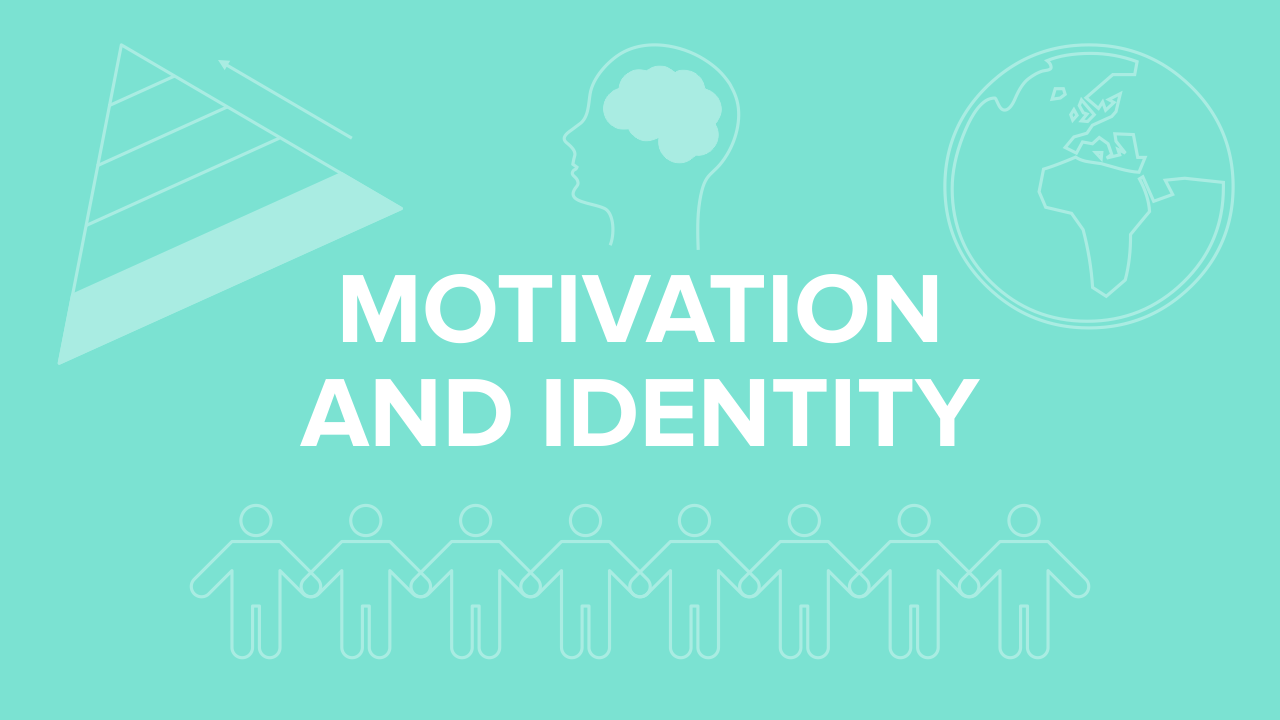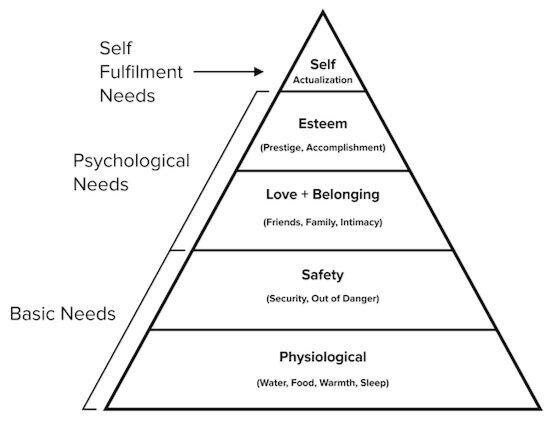Motivation and Identity for the MCAT: Everything You Need to Know
/Learn key MCAT concepts about motivation and identity, plus practice questions and answers
(Note: This guide is part of our MCAT Psychology and Sociology series.)
Part 1: Introduction
Part 2: Motivation
a) Intrinsic and extrinsic locus
b) Theories of motivation
c) Attitudes
Part 3: Self-identity
a) Freud’s theory of psychosexual development
b) Erikson’s theory of psychosocial development
c) Kohlberg’s theory of moral development
d) Vygotsky’s theory of sociocultural development
Part 4: Personality
a) Psychoanalytic perspective
b) Humanistic perspective
c) Social cognitive perspective
d) Behaviorist perspective
e) Biological perspective
f) Dramaturgical perspective
Part 5: High-yield terms
Part 6: Passage-based questions and answers
Part 7: Standalone practice questions and answers
----
Part 1: Introduction
The world is filled with many diverse people with different personalities, different identities, and different motivations. Our motivation to do certain things plays a large role in how we behave and what personalities we adopt and can even come to shape how we see ourselves and how others see us.
This content covered by this portion of the MCAT can seem deceptively easy at first, but there are quite a few theories and terms to keep track of. In this guide, we will break down the main concepts you need to know for the MCAT and provide real-life examples similar to those you will see on exam day. Most terms that are bolded throughout the guide will be defined in Part 5 of the guide, but feel free to create your own terms and definitions/examples as you progress!
Along with knowing the terms and concepts, you will also need to know how to apply them to real-life situations that the MCAT will present. At the end of this guide, there is an MCAT-style passage and standalone questions that will test your knowledge of the covered topics.
Here we go!
----
Part 2: Motivation
a) Intrinsic and extrinsic locus
Motivation is like an invisible force that drives us to act in a certain way and achieve certain goals. Humans are motivated by different sources to do different things. We are motivated to seek out food because our body sends us hunger signals. We are motivated to dress nicely for an interview because it will help us get into medical school.
Our motivation can be either intrinsic or extrinsic, depending on its source, goal, and drive.
Intrinsic motivation is directed by internal rewards or one’s internal desire to do something for its own sake. The activity is inherently rewarding, such as watching your favorite Netflix show, or challenging, such as the career in medicine you are excited about. Intrinsic motivation leads to high productivity and high quality of work because the person is invested in the task itself and not the rewards that come from it.
Extrinsic motivation, on the other hand, is directed by external rewards from the environment. The person is only willing to do the task because it offers some sort of reward, such as receiving money, food, or the avoidance of punishment. For example, employers will offer promotions, bonuses, paid vacations, and other benefits to keep their employees from leaving the company. The employee only continues to work because of these benefits. The locus of control here is external, as it is in the hands of the employer. Even if productivity is high under extrinsic motivation, the quality of work declines over time, and resentment grows.
For the MCAT, you will have to be able to identify the differences between intrinsic and extrinsic motivation. Here’s a table that briefly summarizes the points made above.
| Basis of comparison | Intrinsic | Extrinsic |
|---|---|---|
Figure: Intrinsic and extrinsic motivators pursue different goals and outcomes.
An individual’s self-concept is deeply shaped by factors such as self-esteem, self-efficacy, and perceived locus of control. Self-esteem refers to the perception of one’s identity, self-respect, and role in society. Self-efficacy refers to the perceived capabilities and independence within society. If an individual believes that a situation is out of their control and is deeply influenced by other factors, they can be thought of as relying on an external locus of control. Alternatively, an individual with an internal locus of control may think of themselves as very self-sufficient and capable, thereby holding a highly positive self-concept. Perception of self may also be deeply influenced by the identities of others in primary or reference groups. (For more information on this, be sure to refer to our guide on social psychology.)
To manage self-impressions to either ourselves or to others, we may also perform attributional processes. There are two key attributional processes to consider: the self-serving bias and the fundamental attribution error.
The self-serving bias explains how individuals explain their own successes or failures. If an individual is successful at a task, they are more likely to attribute that to an internal locus of control (such as their own hard work and dedication). If an individual fails at a task, they are more likely to attribute that to an external locus of control (such as through making excuses for themselves or blaming others). The fundamental attribution error states that individuals are more likely to attribute the failures of others to inherent personality faults.
These attributions tend to be deeply influenced by cultural values. For instance, in the United States and some Western cultures, success and failure are emphasized as individual efforts. Thus, the resulting success or failure is often attributed to an internal locus of control.
b) Theories of motivation
How do we understand our basic and higher needs and translate them into motivators? The MCAT will test your knowledge on several theories of motivation, many of which are detailed below.
Maslow’s hierarchy of needs
You may be familiar with this pyramid-shaped figure, in which the base is wider than the top. Maslow’s hierarchy of needs emphasizes the attainment of “lower” needs (depicted at the base of the pyramid) before “higher” needs can be attained.
Figure: Maslow’s hierarchy of needs.
Under this theory, all humans have certain needs that must be met in order to achieve their full potential, but certain needs must be fulfilled before others. The last need that humans can achieve in their lifetime—which is rarely met—is self-personalization, or self-actualization.
Drive reduction theory
This theory, developed by behaviorist Clark Hull, states that the body works to maintain homeostasis (a state of physiological equilibrium) through behavior. For example, imagine the weather outside is extremely hot. Your body begins to sweat, but that alone isn’t enough. Your brain also sends a message to the rest of the body to take your jacket off and seek shade. Similarly, if it’s really cold outside, your body begins to shiver and form goosebumps, but that autonomic response alone isn’t enough. Your brain also sends a message to your body to wear layers and find a warm latte to drink. By motivating certain behaviors, the brain allows our body to fulfill its needs.
Drive reduction theory says that all motivation arises from the goal of fulfilling these biological needs, or drives. These drives can include hunger, thirst, temperature, and other biological needs. These drives create an unpleasant state of tension, and to reduce this drive we become motivated to fulfill the need at hand. This is particularly advantageous from an evolutionary standpoint, as it ensures that organisms can alter behaviors to fulfill needs and survive.
Instinct theory
How do birds know to fly south during the winter? Instinct theory says that we are all born with instincts, or innate tendencies for certain behaviors, that enable us to survive. Instincts must be: 1) unlearned and innate, and 2) occur in a similar fashion across the entire species. These instincts are what help us achieve certain goals that ensure our survival.
Arousal theory
Why is it that some days you feel like going to the club and dancing, while other days you feel like curling up on the couch with hot chocolate and a movie? What motivates us toward these drastically different activities and behaviors?
Arousal theory states that each person has an optimal level of arousal, and that we are motivated to pursue behaviors that will help us maintain this optimal level. If our arousal levels are higher than normal, we become motivated to seek out behaviors that will reduce our arousal. For example, you go out with friends for a night on the town but you start to get overstimulated. You might become more motivated to choose something relaxing to do, like taking a nap, in order to bring your arousal levels back down to normal.
Arousal theory is similar to drive-reduction theory in that both aim to maintain homeostasis, but arousal theory focuses on maintaining optimal arousal, whereas drive-reduction theory focuses on maintaining homeostasis by reducing tension.
Incentive theory
Incentive theory is quite different from the other theories of motivation we have already discussed. While other theories use the maintenance of self as motivation for behavior, incentive theory states that behavior is motivated by the individual’s environment through rewards—for instance, through extrinsic motivation. Incentive theory, which is heavily based on behaviorism, says that people are motivated to behave in ways that lead to rewards (such as food and money) and are demotivated from behaving in ways that lead to negative consequences (such as fines and criminal punishment).
For example, young children might be motivated to do their homework because their teacher promised them an ice cream party. On the contrary, they are motivated to refrain from calling each other names because the teacher would place them in timeout.
Gain instant access to the most digestible and comprehensive MCAT content resources available. 60+ guides covering every content area. Subscribe today to lock in the current investments, which will be increasing in the future for new subscribers.



